
Guests
- Mehrsa Baradaranassociate professor of law at the University of Georgia, specializing in banking regulation. She is the author of How the Other Half Banks: Exclusion, Exploitation, and the Threat to Democracy, published this month by Harvard University Press.
The nation’s financial crisis taught us that when it comes to Wall Street giants, political leaders consider some banks “too big to fail.” After initial misgivings, Democrats and Republicans joined together to commit over $700 billion to rescue major firms from collapse. Now a new book looks at the inverse of this policy: when it comes to serving communities on the local level, some banks are just too small to rescue. In “How the Other Half Banks: Exclusion, Exploitation, and the Threat to Democracy,” University of Georgia law professor Mehrsa Baradaran explores how poor communities have been denied the normal banking opportunities that help sustain households and grow economies.
Transcript
JUAN GONZÁLEZ: The nation’s financial crisis taught us that when it comes to Wall Street giants, political leaders consider some banks “too big to fail.” After initial misgivings, Democrats and Republicans joined together to commit over $700 billion to rescue major firms from collapse. But what was widely accepted seven years ago this month may no longer be the case today. Just this week, Democratic presidential front-runner Hillary Clinton said we should let the banks fail if the same situation arises again. Clinton was speaking on The Late Show with Stephen Colbert.
STEPHEN COLBERT: If you’re president—
HILLARY CLINTON: Yes.
STEPHEN COLBERT: —and the banks—and the banks are failing, do we let them fail this time?
HILLARY CLINTON: Yes, yes.
STEPHEN COLBERT: We let them fail this time?
HILLARY CLINTON: Yes, yes, yes, yes.
STEPHEN COLBERT: Wow.
HILLARY CLINTON: Yes. First of all, under Dodd-Frank, that is what will happen, because we now have stress tests, and I’m going to impose a risk fee on the big bank if they—if they engage in risky behavior. But they have to know, their shareholders have to know, that, yes, they will fail. And if they’re too big to fail, then, under my plan and others that have been proposed, they may have to be broken up, because if you can’t manage it, then it’s more likely to fail.
JUAN GONZÁLEZ: But if big banks have been too big to fail so far, we turn now to a look at the inverse of this policy: When it comes to serving communities on the local level, some banks are just too small to rescue. That’s the lesson of the new book, How the Other Half Banks: Exclusion, Exploitation, and the Threat to Democracy, by author and law professor Mehrsa Baradaran. The book explores how poor communities have been denied the normal banking opportunities that help sustain households and grow economies.
AMY GOODMAN: Between 2008 and 2013, some 2,000 bank branches were shut down in the United States. Ninety-three percent of those were in lower-income communities. Without normal banks, these communities have been at the mercy of check cashers and payday lenders, who charge rates and fees far higher than any normal institution. The result is a predatory system that helps keep low-income people in a crushing cycle of debt.
Mehrsa Baradaran argues in favor of a public banking option, such as through the post office, a system shut down in the U.S. nearly 50 years ago, an idea that also came up on late-night television recently when Democratic presidential hopeful Bernie Sanders was interviewed by Jimmy Kimmel.
JIMMY KIMMEL: This is something I’ve never heard before: You want to make post offices into banks.
SEN. BERNIE SANDERS: Well, what I want to see is—
JIMMY KIMMEL: Or provide banking at the post office.
SEN. BERNIE SANDERS: Jimmy, we have millions and millions of low-income people who have to go to these payday lenders and pay outrageous interest rates. They’re getting ripped off right and left. We can have our Postal Service provide modest banking to low-income people, where they can cash their checks and they can do banking. I think it will help the post office, and it will help millions of low-income people.
AMY GOODMAN: That was presidential candidate, Vermont Senator Bernie Sanders, speaking on Jimmy Kimmel Live. We’re joined now by Mehrsa Baradaran, the associate professor of law at the University of Georgia, specializing in banking regulation, who wrote How the Other Half Banks. So talk about how the other half banks and what we should know.
MEHRSA BARADARAN: That’s right. So, you know, half the population couldn’t access $400 within a month to meet some emergency needs. Right? Your tire needs to be fixed. Your kid is in the hospital, and you have some bill. You don’t have that money, you have to borrow from someone. And if you don’t have friends and family, you have to go to a payday lender. And you pay somewhere from 300 to 2,000 percent APR. So by the time all is said and done, you’ve not only, you know, paid back that initial principal, but 10 times, 20 times the principal. And so, this is something that not only doesn’t help people, but it ends up turning a temporary cash crunch into a financial disaster.
And not to mention a whole slew of other services that’s just not available to people [without] banking accounts. For example, to just use your paycheck, you have to pay, a lot of times, 10 percent of your money just to cash it, and then another, you know, couple dollars to turn it into a money order to pay your bills. Right? So this is, you know, more than a lot of low-income people spend on food, they have to pay for financial services.
And I see that as not just an economic problem. Right? As you said earlier, we’ve bailed out the big banks. We’ve funneled so much government money to shore up this system, while half the public has no access to that. And that half also doesn’t have access to any emergency liquidity, as the banks have so voluminously had access to. And so, the point of this book is let’s equalize the playing field a little bit.
JUAN GONZÁLEZ: Well, in terms, I mean, for instance, in banking, even on ATM machines, the less money you have in your account—
MEHRSA BARADARAN: Right.
JUAN GONZÁLEZ: —the more you end up paying in fees just to be able to withdraw money. But yet there’s a lot of money being made. You mentioned the payday lenders. A lot of them are being bankrolled by major firms on Wall Street.
MEHRSA BARADARAN: That’s right. These payday lenders operate behind this sort of façade of informality. They seem like these mom-and-pop community shops. They’re not. They’re huge corporations. They make plenty of profits. They’re making a great margin on these loans. Look, I mean, yes, it is, you know, more expensive to lend to someone that is less liquid, right, has less money, but it’s not as expensive as they say they are. And the reason is, look—I mean, you look at how much payday lenders charge. Most of them charge the cap, usury laws allowable per state, right? So they don’t compete on price. These borrowers are not price-sensitive. They don’t shop around. And so there’s no incentive to lower the prices. And this is where a public option really steps in and says, “Look, we’re going to lower the price at the cost of the loan—not the cost plus profits plus all of the other overhead that we have, and have the poor bear that cost.” Lend at the cost of the loan and give a huge buffer to people who really need it.
AMY GOODMAN: I want to turn to a payday loan borrower named Mary Bates. The single mother of two told CBS News she took out a $200 loan, plus interest, to fix her car. But after paying it off two weeks later, she couldn’t afford to live on what was left. So she had to take out another loan, starting a two-year cycle with a variety of payday lenders. It reportedly ended up costing her $1,500 plus interest to essentially recover from what was a $200 loan.
MARY BATES: An endless cycle, a dead-end. I would advise anybody not to. … They’re set there for people like me that live payday to payday. And then once you get in there, you can’t get out. … I would do without electricity, water, whatever it would take until my next payday, until I could pay. I would not do it.
AMY GOODMAN: Mehrsa Baradaran, explain her situation and how typical it is.
MEHRSA BARADARAN: Absolutely. It’s so typical. I hear so many stories like this. It’s so tragic. You know, a lot of people just need that $500 to get—you know, just to live. You know, life happens. You have unexpected emergencies. And for many of us, we have this buffer that can, you know, take the hits of life. And some people, they don’t, and so they get involved in this cycle of debt. And it turns, again, just a temporary problem into sometimes a permanent one. As she said, I would recommend anyone to not do this. But the problem is: Then what? What do you do? If you don’t have a payday loan, and you don’t have friends and family who can sort of send you this money, there really isn’t an alternative.
And in the book, in the introduction of the book, I compare, you know, people like her, who have this cash crunch and end up having to pay this much interest, versus, you know, a fictional person named Steven, who also had a cash crunch and got this miracle lender to lend to him at 0 percent interest and even bought up all of his bad investments. And, of course, this fictitious person is the nation’s banks. And I actually don’t think that analogy is that far off. Really, the banks weren’t just illiquid, right? They didn’t have a temporary cash crunch. Many of them were insolvent. And so, we didn’t just give them temporary loans, we actually ended up buffering them from the cost of their own misdeeds. And—
JUAN GONZÁLEZ: How was it that these affordable banking services became so rare? There was a time when there were community banks and credit unions all over the place, and you were able to get affordable banking service. What’s happened?
MEHRSA BARADARAN: Absolutely. So, over the last 30 years—and there’s a direct correlation, by the way. As the community banks leave these areas—credit unions, savings and loans—the fringe lenders come in. There was no payday loan before the 1980s, when communities had, you know, plenty of banking options, between credit unions, small community banks and thrifts. And over the last 30 years, there’s been market changes and deregulation that’s caused a massive conglomeration in banking. So now we have very large national, multinational banks, and it’s very difficult for community banks to compete against these banks, especially given that there is really no government support for these small institutions. And now, you know, if you’re a credit union, you’ve got to compete with the banks, and so you’re going to go after the higher-income individuals. So there just is this gap.
AMY GOODMAN: Last year, comedians John Oliver and Sarah Silverman weighed in on payday loans.
JOHN OLIVER: Apparently, 41 percent of those surveyed who have taken out payday loans ended up having to borrow from family or pawn possessions or other things that they could have done in the first place just to pay off that payday loan. And yet, payday loans superficially do look easier. All these commercials, they’re enticing, and they’re also everywhere. The least we can do is launch a countercampaign with a celebrity spokesperson of our own to remind people to make sure they explore all their better options first.
SARAH SILVERMAN: Hi, I’m Sarah Silverman. If you’re considering taking out a payday loan, I’d like to tell you about a great alternative. It’s called AnythingElse. The way it works is, instead of taking out a payday loan, you literally do anything else.
AMY GOODMAN: That’s Sarah Silverman and John Oliver. Mehrsa Baradaran, as we wrap up, the significance of what they’re saying? And also talk about postal banking.
MEHRSA BARADARAN: Yeah, so, one thing is, they say “anything else,” but what? You know? And I think that’s a problem that a lot of people—whenever I go talk about this, people say, “OK, you know, people need to be educated on the harms of these loans.” And I think a lot of people know full well the harms of these loans, but what is that anything else? I mean, she goes into some off-color suggestions in the bit, which I won’t go into, but, you know, there really aren’t any other options.
And the reason I go with postal banking in this book is because, look, as the community banks left these areas, the post offices remained. And in every ZIP code, there’s a post office. It is a place where people feel comfortable. It’s an institution that has done this very well for 50 years, from 1910 until 1966. We had a thriving postal banking system—as does, by the way, every other developed country. And, you know, these are institutions that can very well handle the low-risk transactional accounts that we’re talking about, and even possibly small loans, that could really throw a lifeline to the people who most need it. And it would, essentially, cut out the middleman, the banking system that has become so bloated and is just not serving this other half of the population.
AMY GOODMAN: It’s a comment period for the Consumer Financial Protection Bureau exploring new rules for tackling payday loaning?
MEHRSA BARADARAN: That’s right. And so, that’s been the model so far, is we’re going to regulate payday loans, we’re going to put caps on interest, if we can, you know, take away some of the claws of the industry and the worst of the offenses. And I think this is great, and I think we definitely should do this. The problem with these regulations is a lot of times they’re easy to be skirted, so you cap something, and it pops up in something else. You lower interest, and it comes out as a fee or an insurance product. And so, this is a wily industry. It’s like whack-a-mole or cat and mouse. And so, you know, I hope that we do have very stringent regulations, but until we have an alternative, I think the supply is going to be met by some sort of demand.
AMY GOODMAN: I want to thank you for being with us, Mehrsa Baradaran, associate professor of law at the University of Georgia, specializing in banking regulation. Her book is How the Other Half Banks: Exclusion, Exploitation, and the Threat to Democracy. This is Democracy Now!, democracynow.org, The War and Peace Report. I’m Amy Goodman, with Juan González.

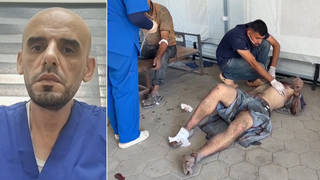
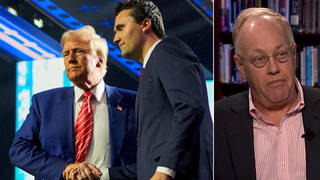
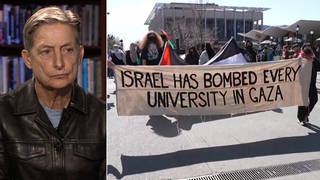
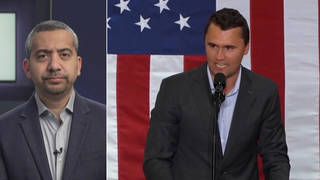
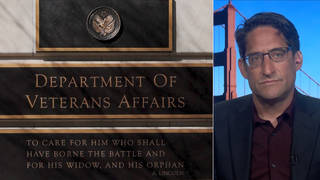
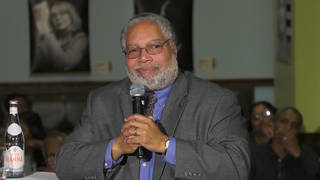

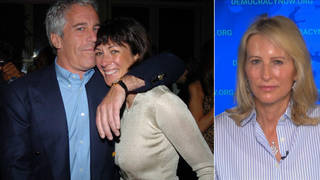

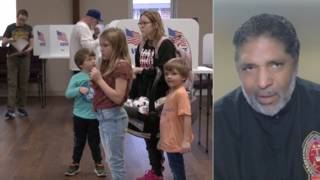
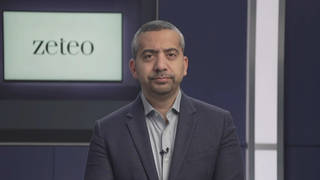
Media Options